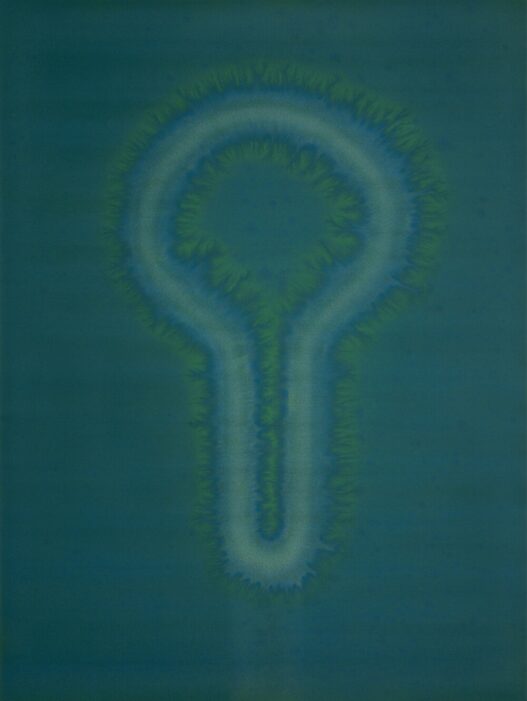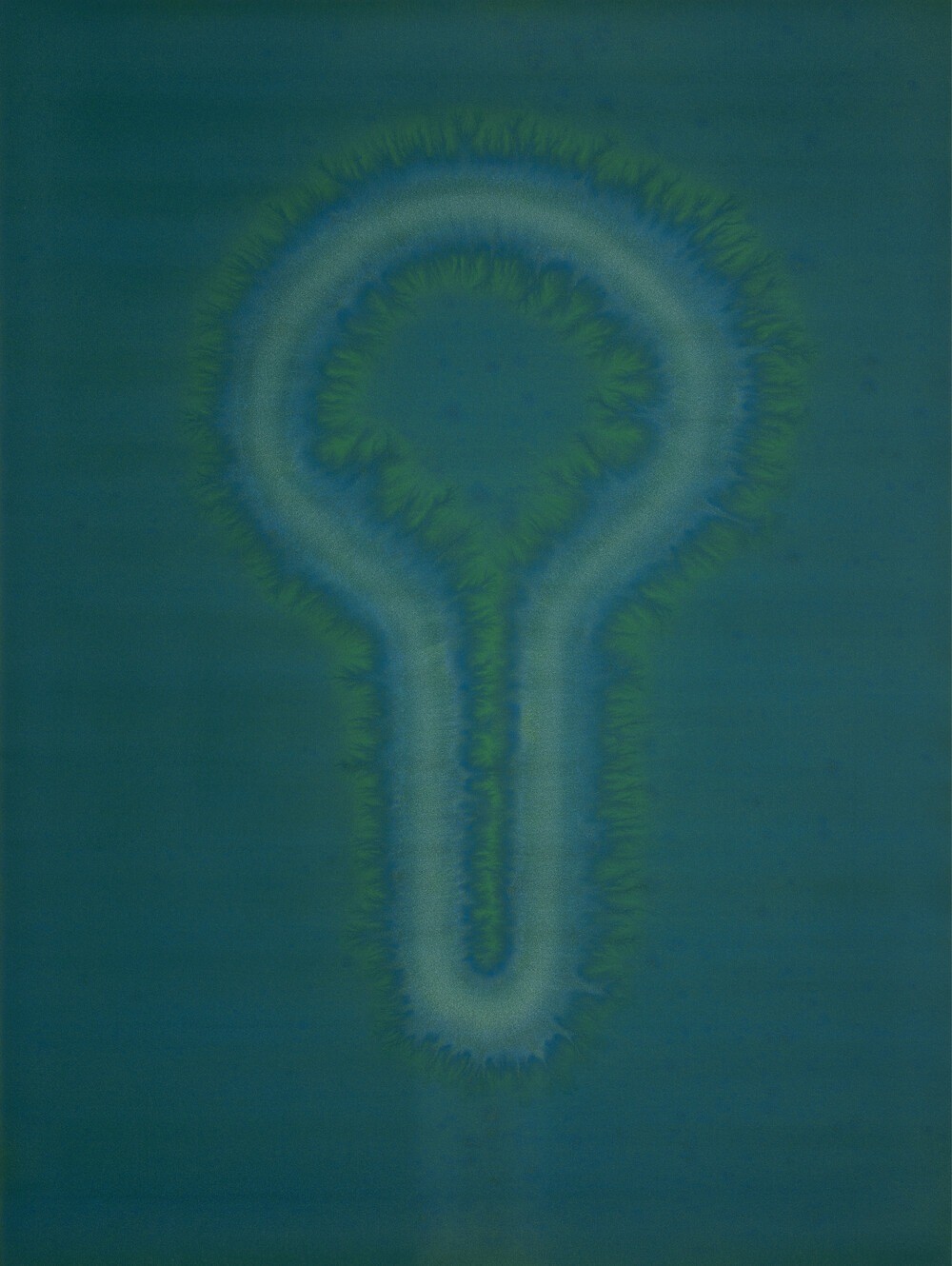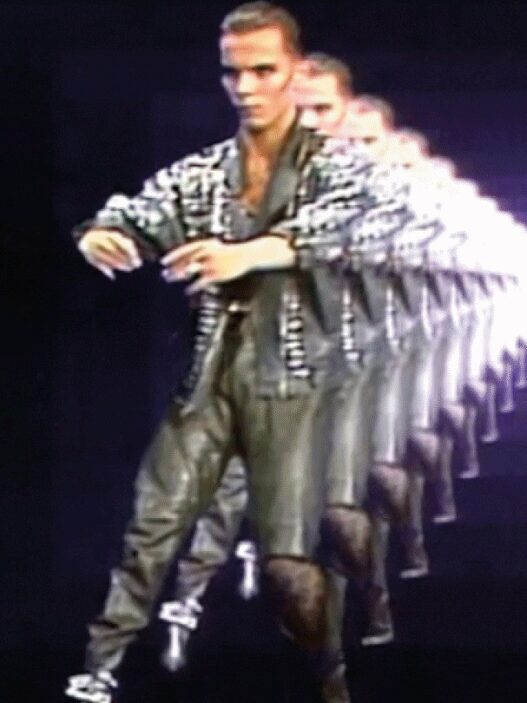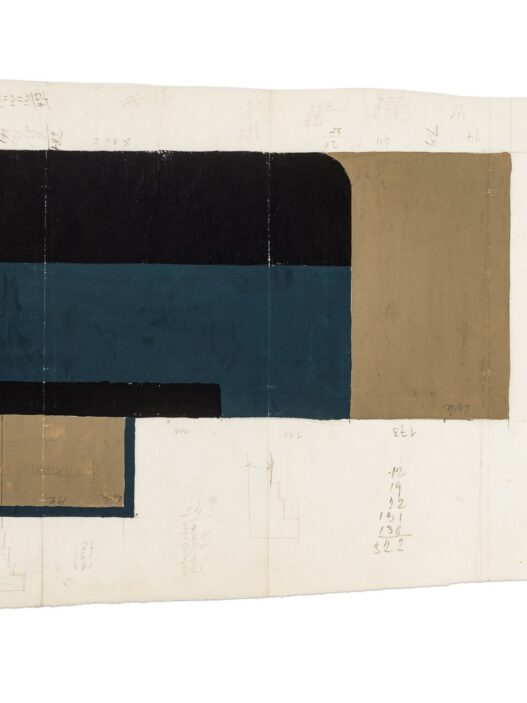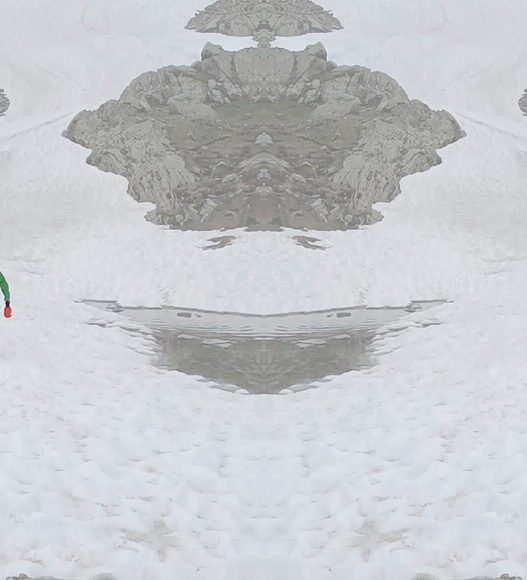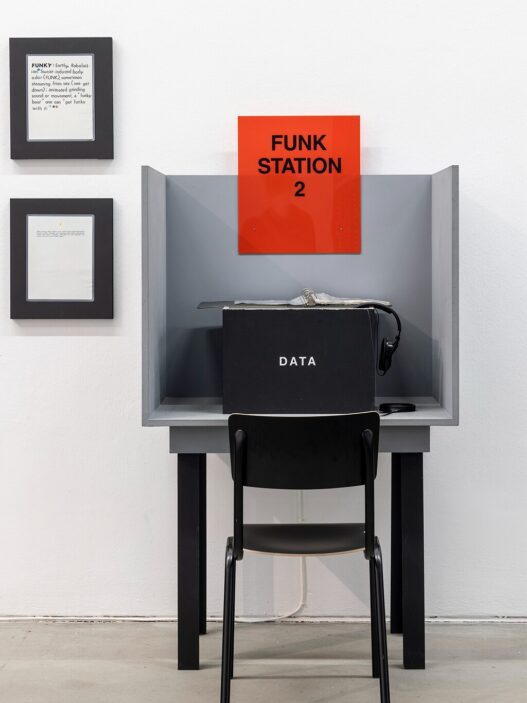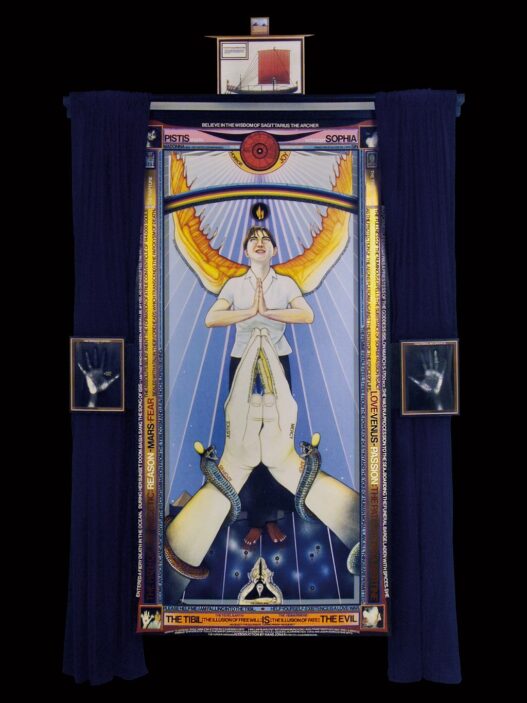September 15–October 15, 2022
Walking along the River Thames to Paul Barlow’s studio in Woolwich, I found peculiar parallels between the deep ridges in the mud along the riverbank, and the blooming halos of the artist’s paintings. Yet while Barlow’s paintings are reminiscent of forms in nature, they are infused with aspects of a world beyond the naked eye.
A self-proclaimed “mudlark” of strange forms, the abstract shapes that Barlow invents are the result of an exacting process. By adding and subtracting paint from the canvas using a water-soaked brush, Barlow allows the liquid to disperse across the pigmented surface so that thread-like ravines move outwards from the broader strokes he makes. Sometimes the result is an electrifying, charged image; sometimes it is but a soft glow.
To make these paintings, Barlow layers thin washes of diluted acrylic paint, creating veils of colour that are then disrupted by the brush. As the water shifts within the weave of the canvas, the images arise autonomously. When Barlow leaves the studio at night, there is no guarantee of what he will find the next day.
A remarkable aspect of Barlow’s practice is that the more methodical he is with his process, the more expansive it becomes. The repetitions of form and technique enable him to guide the paint into its own liberation. While the artist’s own gesture is important in this process—including the act of moving his body around the canvas, which is placed upon a set of trestles—Barlow emphasises that it is not about the performative element of moving water and paint across the canvas; it is about the image.
References to nature radiate from Barlow’s paintings and his inquisitive mind is revealed when he discusses the different phenomena he has spent time researching. Most recently it is superfluidity, a phenomenon in physics whereby a fluid flows with constant kinetic energy through the absence of its viscosity, which can be observed in specific forms of helium at very low temperatures.
When asked where his paintings might go next, Barlow rejects any certainty. He projects the sense that something is compelling him to chase these shapes, moving towards expansion but also to a level of absurdity. “Really my process isputting paint on the canvas and taking it off again,” he laughs. And while this may be true, it is a statement that reflects the magic of Barlow’s practice, and painting more broadly.
Paul Barlow: Superfluids is accompanied by an exhibition booklet with an essay by Patrick Langley.
Karsten Schubert London
Room 2, 44 Lexington Street
London W1F 0LW
United Kingdom
T +44 20 7734 9002
info@karstenschubert.com
www.karstenschubert.com
Instagram









